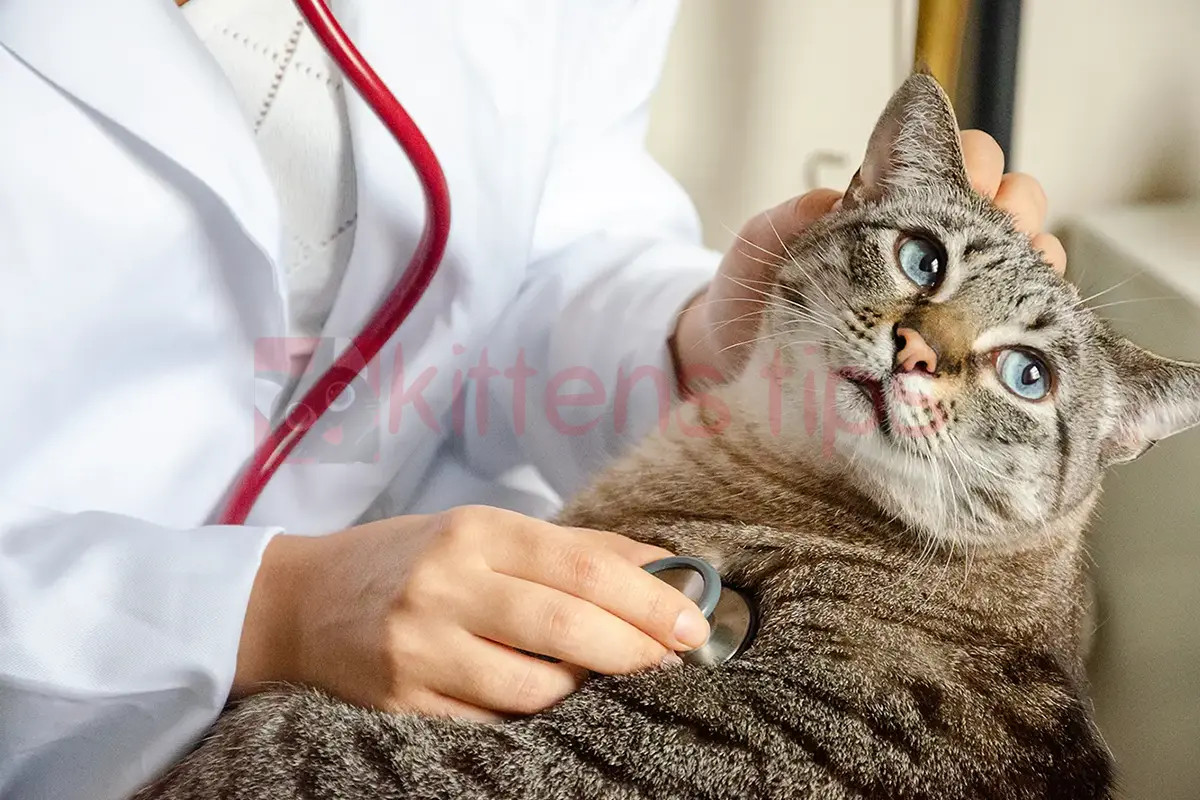Panleukopenia or Feline Parvovirus (FPV) is an extremely contagious viral disease that affects cats. It is caused by the feline parvovirus, which is highly resistant and can survive in the environment for an extended period. The virus primarily affects the gastrointestinal and hematopoietic systems of cats.
What is Panleukopenia or Feline Parvovirus (FPV) and what are the symptoms?
Panleukopenia or Feline Parvovirus (FPV), is a severe, highly contagious infectious disease that affects cats. It primarily targets the white blood cells and quickly invades the digestive, nervous, and lymphatic systems of the animal.
This disease manifests very aggressively in kittens or young cats that are still in the development stage. The rapidly replicating cells are the main target of the feline parvovirus. Therefore, in rapidly growing felines, the virus has the opportunity to attack a large number of cells in various tissues and organs.
It’s entirely possible for a mature cat that contracts this virus to be asymptomatic, and parvovirus may not manifest at all.
The virus has an incubation period of 3-4 days, and its onset is aggressive. Therefore, when you observe the first signs (usually bloody diarrhea), the virus is already established and has invaded the body.
The onset often involves fever (40-41 degrees Celsius), vomiting, diarrhea, lethargy, and loss of appetite. These symptoms are often mistaken for poisoning.
Other symptoms that should be cause for concern include apathy and lethargy, indifference to their surroundings, head resting on paws, frequent, foul-smelling defecation (up to 25 times a day), a sensitive and painful abdomen, crying, difficulty walking, excessive thirst, and, in severe cases, the development of conjunctivitis, limb paralysis, and loss of skin elasticity.
How is feline parvovirus transmitted?
Panleukopenia or Feline Parvovirus (FPV), is rapidly transmitted through oral contact between cats or via contact with the feces or saliva of another cat. Additionally, owners can bring the virus into their homes by carrying it on their clothing or shoes. Kittens under 5 months of age are the most affected, and the virus can persist for up to one year after a cat has been infected. The survival rate for this virus is 50%.
The virus is resilient and can hide in carpets, furniture, and hardwood floors but can be destroyed with bleach-based substances.
Unfortunately, 95% of affected cats die within 3-4 days if the symptoms are neglected.
Treatment for Feline Parvovirus and Vaccination
From the first day when symptoms are observed, it is recommended to consult a veterinarian. The diagnosis can be established through a rapid test (ELISA) that counts white blood cells.
Once the virus is detected, the cat should be isolated from other cats, the area should be cleaned, and all items it has come into contact with should be disposed of and replaced with new ones.
Treatment is preferably carried out in a hospital setting, so the cat should be hospitalized for the entire recommended period by the veterinarian.
Treatment is quite aggressive and involves intravenous fluid therapy, antibiotics, glucose, vitamins, electrolytes, and occasionally blood transfusions.
If the cat survives, make sure to thoroughly disinfect the living area. If you have other cats, isolate them from the sick one and bathe the cat brought back from the hospital.
The cat should be kept in a quiet and warm room for a few days after treatment and can be given chamomile or mint tea. Follow the diet and treatment prescribed by the veterinarian exactly.
Once treated and saved, the cat will become immune for the rest of its life.
Related: Hypertrophic Cardiomyopathy in Cats – Symptoms and Treatment
Conclusion
In conclusion, it’s crucial to understand the severity of Panleukopenia or Feline Parvovirus (FPV) and its potential consequences for cats. Early diagnosis and immediate veterinary intervention are paramount when dealing with Panleukopenia or Feline Parvovirus to improve the chances of survival and recovery. This deadly and highly contagious disease necessitates strict isolation, hospitalization, and an aggressive treatment approach. By prioritizing the health and well-being of your feline companions and seeking prompt medical attention, you can effectively manage the threat of Panleukopenia or Feline Parvovirus.
What is Feline Panleukopenia (FPV)?
Feline Panleukopenia (FPV) is a severe and highly contagious viral disease that affects cats. It is caused by the feline parvovirus and can impact the gastrointestinal and hematopoietic systems of cats.
How is Feline Panleukopenia transmitted?
The disease is transmitted through direct contact between cats or via exposure to the feces or saliva of an infected cat. Humans can also carry the virus into their homes on clothing or shoes.
What are the symptoms of Feline Panleukopenia?
Symptoms include fever, vomiting, bloody diarrhea, lethargy, loss of appetite, abdominal pain, and, in some cases, conjunctivitis, paralysis, and difficulty in movement.
How is Feline Panleukopenia treated?
Treatment often involves hospitalization, intravenous fluid therapy, antibiotics, glucose, vitamins, and electrolytes. Blood transfusions may be necessary in rare cases.
How can Feline Panleukopenia be prevented?
Prevention includes regular vaccination of cats against feline parvovirus. Maintaining good hygiene and avoiding contact with unknown or infected cats can also reduce the risk of virus transmission.
